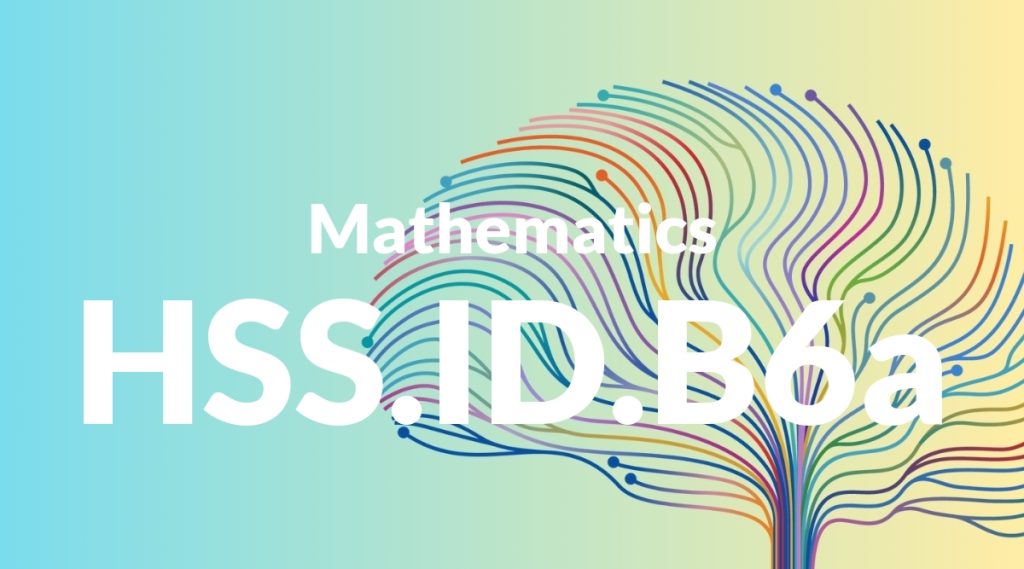Standard: HSS.ID.B6a – Fit a function to the data; use functions fitted to data to solve problems in the context of the data. Use given functions or choose a function suggested by the context. Emphasize linear, quadratic, and exponential models.
Grade level: High School: Statistics & Probability
Subject: Mathematics
Domain: Interpreting Categorical & Quantitative Data
Teacher Overview
This standard focuses on fitting functions to data and using these functions to solve real-world problems. Understanding how to choose and apply the appropriate function is crucial for interpreting data accurately. This skill is important for students as it lays the groundwork for more advanced statistical analysis and helps them make informed decisions based on data. Students should be comfortable with algebraic manipulations and basic statistical concepts. They should know how to interpret graphs and charts and understand the properties of linear, quadratic, and exponential functions.
After mastering this standard, students will be equipped to handle more complex data sets and apply their knowledge to various real-world problems. They will also be ready to delve into more advanced statistical topics, such as regression analysis and hypothesis testing.
Common Misconception 1
A common misconception is that any function can be used to fit data without considering the context. This is incorrect because the context often dictates the most suitable type of function. For example, linear functions are appropriate for data showing a constant rate of change, while exponential functions are better for data showing rapid growth or decay.
Intervention 1
To address this misconception, provide students with various data sets and contexts, and guide them in selecting the appropriate function. Use real-world examples and explain why certain functions are more suitable based on the context.
Common Misconception 2
Another misconception is that the function fitting process is always precise and that the resulting function perfectly represents the data. In reality, function fitting involves approximations, and the resulting model may not perfectly match the data. This can lead to overconfidence in the model’s predictions.
Intervention 2
Introduce students to residual plots and the concept of residuals to show the differences between the observed data and the model’s predictions. Explain that a good model minimizes these residuals but may not eliminate them entirely.
Prerequisite Knowledge
Students should have a solid understanding of basic algebra, including how to manipulate equations and understand functions. They should also be familiar with basic statistical concepts such as mean, median, and mode, as well as how to interpret graphs and charts.
Subsequent Knowledge
After mastering this standard, students will be able to apply their knowledge of function fitting to more complex data sets and real-world problems. They will also be prepared to explore more advanced topics in statistics and probability, such as hypothesis testing and regression analysis.
Instructional Activities
- Analyzing historical weather data to predict future trends
- Modeling population growth in different regions
- Using sales data to forecast future business performance
- Examining the spread of diseases using exponential functions
- Creating and interpreting residual plots to evaluate model accuracy




